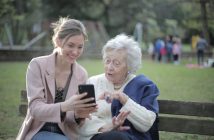Caring for and educating children with special needs presents a unique set of challenges and opportunities. These children require a delicate balance of support, understanding, and specialized teaching strategies to thrive. Hence, collaboration between teachers and parents is crucial in creating an environment where students with special needs can succeed both academically and socially. This partnership forms a support network that fosters growth, learning, and the development of essential life skills.
In the journey to provide the best care and education, both educators and parents must equip themselves with knowledge, patience, and innovative approaches to teaching.
Here, we explore ten effective ways teachers and parents can work together to enhance the educational experience for students with special needs.
Establishing Clear Communication Channels
Communication is the cornerstone of any successful partnership. For students with special needs, establishing robust channels of communication between teachers and parents is crucial. This open line allows for the sharing of observations, strategies, and concerns, ensuring that both parties are informed and in sync regarding the student’s progress and needs. Regular updates, whether through meetings, emails, or digital platforms, help in adjusting educational plans swiftly and effectively, ensuring the student’s learning environment is always conducive to their growth.
Enhancing Teacher Education
The foundation of effective special education lies in the hands of well-prepared teachers. Pursuing advanced degrees such as an online master’s in special education allows educators to deepen their understanding of various disabilities and learn cutting-edge strategies for instruction and support. This advanced degree not only enriches a teacher’s skill set but also enables them to apply contemporary teaching methods directly into their classrooms. Such continuous professional development ensures that educators are equipped to meet the needs of their students, providing personalized and effective education.
Creating Individualized Learning Plans
The individual needs of students with special needs demand personalized approaches. Individualized Learning Plans (ILPs) are tailored strategies designed to address the unique challenges and strengths of each student. Developed collaboratively by teachers, parents, and sometimes the students themselves, these plans outline specific educational goals, teaching methods, and necessary accommodations. ILPs are a dynamic tool, regularly reviewed and adjusted, ensuring that the educational journey is as effective and responsive as possible.
Incorporating Technology and Assistive Devices
Technology has transformed the landscape of special education, offering tools that can significantly reduce barriers to learning. From applications that enhance communication for students who have speech difficulties to devices that assist with reading and writing, technology can cater to a wide range of needs. Teachers and parents should work together to identify the most suitable technological supports, integrating them into both classroom and home environments to provide a consistent and supportive learning experience.
Fostering an Inclusive Classroom Environment
Inclusion is about more than physical presence in a classroom; it’s about creating a sense of belonging and value for all students. Teachers play a pivotal role in fostering an inclusive environment, one where differences are not just accommodated but celebrated. Strategies include adapting teaching methods to ensure all students can participate, promoting understanding and empathy among peers, and ensuring that classroom activities are accessible to everyone. An inclusive classroom not only benefits students with special needs but enriches the educational experience for all students, fostering a culture of diversity and respect.
Promoting Social Skills and Peer Interaction
Developing social skills and facilitating peer interaction are critical components of the educational journey for students with special needs. Social interactions not only enhance communication skills but also build self-esteem and emotional intelligence. Teachers and parents can create structured yet flexible opportunities for these students to engage with their peers, such as group activities or social skills groups, tailored to their comfort and ability levels. Encouraging friendships and social participation helps these students feel included and valued, promoting a sense of belonging within their community.
Implementing Behavior Management Strategies
Behavior management is an essential aspect of supporting students with special needs. Many of these children may exhibit challenging behaviors due to frustration, communication barriers, or sensory sensitivities. Effective behavior management strategies involve setting clear expectations, employing positive reinforcement, and maintaining consistency in both school and home settings. By focusing on positive behaviors and providing appropriate support, educators and parents can create a stable, understanding environment that encourages students to engage positively with their learning and peers.
Offering Emotional Support and Encouragement
Emotional support is an essential aspect of the support system required by students with special needs. By recognizing and validating their feelings, educators, and parents can help these students navigate the challenges they face. This support includes celebrating their successes, big or small, and providing encouragement through difficulties. Such an approach fosters resilience and a growth mindset, empowering students to persevere and maintain a positive outlook on their educational journey and beyond.
Encouraging Physical Activity and Health
Physical well-being is intrinsically linked to academic and social success. Regular physical activity not only improves physical health but also enhances cognitive function, concentration, and mood. For students with special needs, finding enjoyable and accessible physical activities is crucial. This might involve adaptive sports, movement-based learning activities, or simple exercises tailored to the student’s abilities. Collaborating to integrate these activities into the student’s daily routine supports their overall well-being and academic performance.
Continuously Seeking Professional Development and Resources
The landscape of special education is ever-evolving, with new research, strategies, and resources continuously emerging. Staying informed and seeking professional development opportunities are vital for educators and parents alike. This ongoing learning can come from workshops, seminars, online courses, or educational resources that offer insights into innovative teaching methods, technological aids, and behavior management strategies. Keeping abreast of the latest developments ensures that the support provided to students with special needs is based on the most current evidence and best practices.
Conclusion
The journey of educating students with special needs is complex and rewarding, requiring a combined effort from both teachers and parents. These strategies highlight the importance of a collaborative approach, underscoring the idea that when we work together, adapting and innovating, we can overcome challenges and unlock the full potential of every student. Through commitment, creativity, and compassion, educators and parents can provide the supportive, enriching, and inclusive education that students with special needs deserve.





Your blog provided us with valuable information to work with. Each & every tips of your post are awesome. Thanks a lot for sharing. Keep blogging,
To show my appreciation for the incredible content that you have provided for us, I would want to express my gratitude to you. I am able to guarantee that the vast majority of individuals would get anything from reading this.
Raising and educating children with special needs is a truly extraordinary journey that requires a great deal of dedication, patience, and cooperation between teachers and parents. Such collaboration, based on adaptation and innovation, opens up new opportunities to overcome challenges and reveal the full potential of each child. In this context, the knowledge and experience gained from the process of researching and writing a case study can become valuable tools for teachers and parents who seek to improve the educational experience of children with special needs. The site view this page offers specialized case study writing services that can help you understand and develop effective teaching and learning strategies based on real-life cases and research. This not only contributes to a deeper understanding of the special needs of students but also opens the way to innovative teaching approaches that can significantly improve the quality of education and the support they receive.